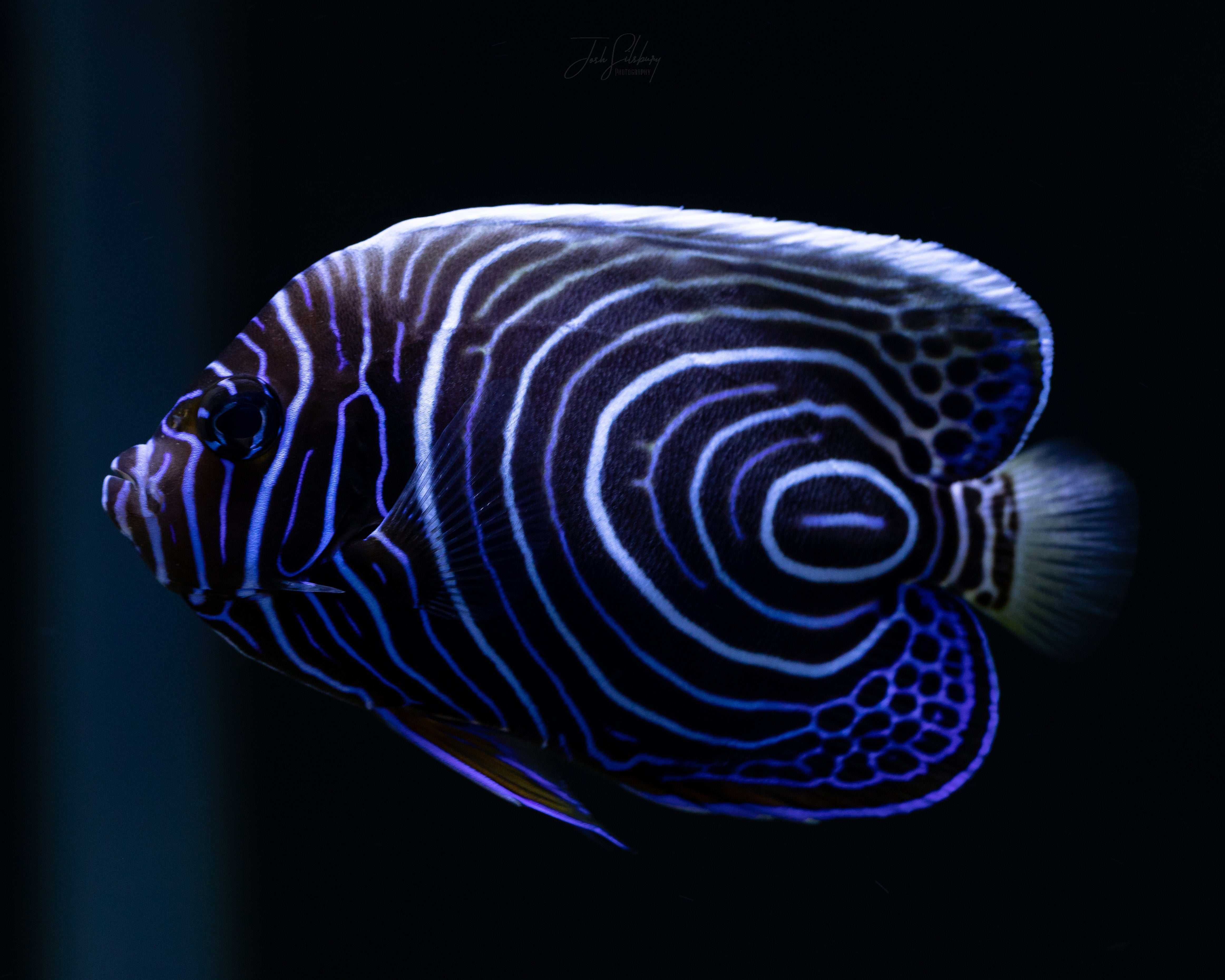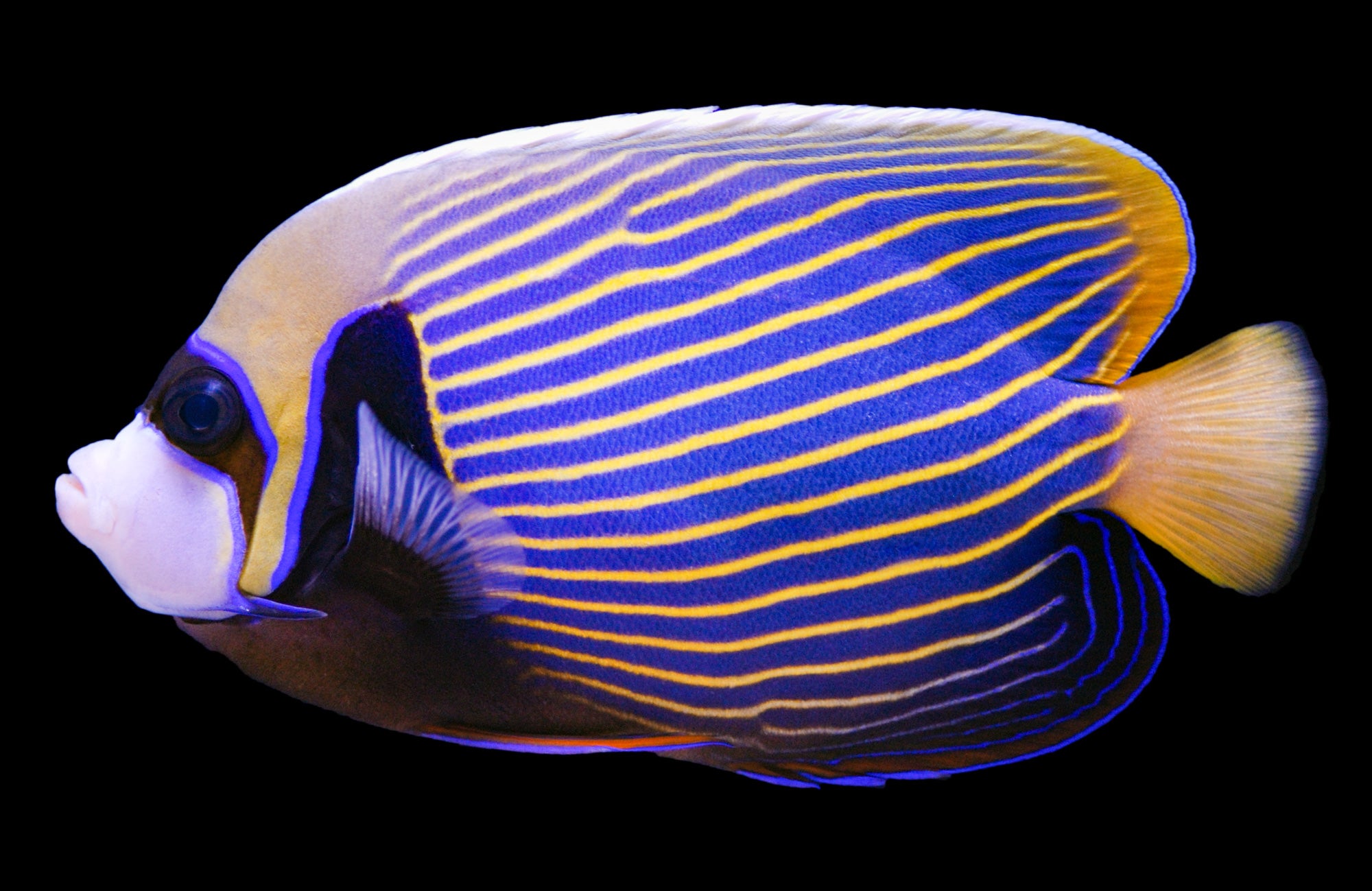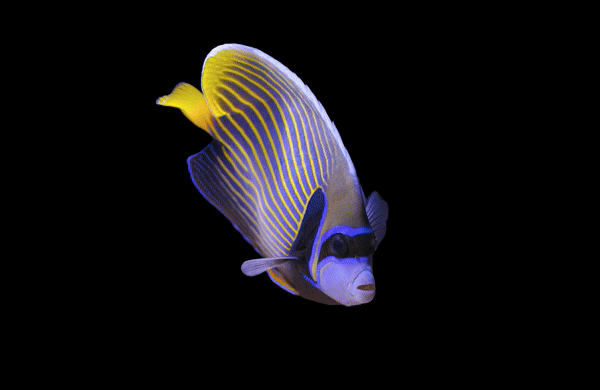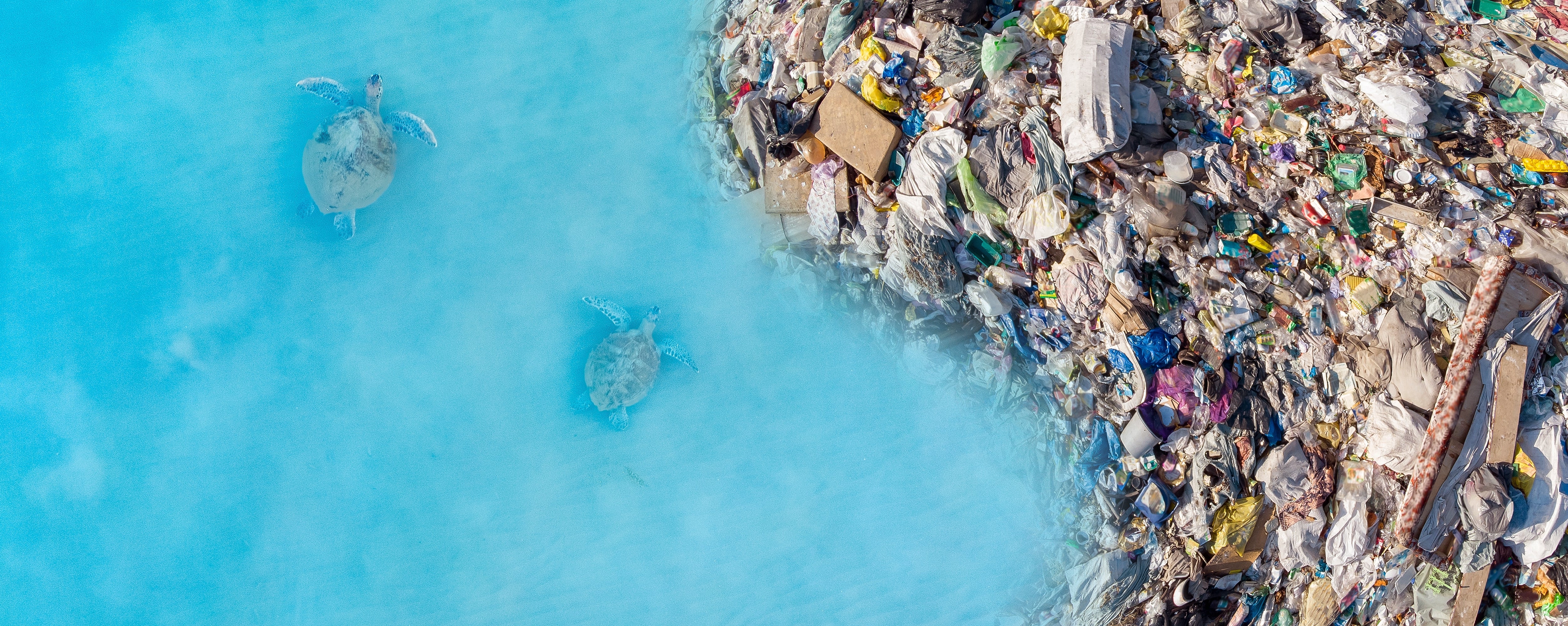8 MIN READ
2-21-2024
“A Living
Masterpiece”
Animal Index: Emperor Angelfish
Henry Bliss, 4ocean Story Producer
Embark on a journey beneath the ocean’s surface and discover the living masterpiece known as the Emperor Angelfish.
Imagine navigating through the vibrant coral reefs and stumbling upon this aquatic showstopper, gracefully weaving through the intricate tapestry of marine life.

Picture a juvenile with a mysterious allure, adorned in dark blue with electric blue and white rings, hiding amidst the coral's embrace. As it matures, witness a breathtaking transformation into an adult dressed in regal yellows, blues, and blacks, crowned with a striking black mask and a touch of royal blue on its forehead. This underwater ambassador isn't just a visual spectacle; it's a guardian of the coral realms, cruising through its territory with a certain regality.

“Juvenile”
@joshsils

“Adult”
@thequalitymarine
Habitat Overview:
Emperor Angelfish are typically associated with coral reefs and lagoons within these regions, where they find suitable habitats with abundant coral growth and diverse marine life. Their preference for coral-rich environments makes them a prominent and visually striking species in these tropical and subtropical waters.

The Emperor Angelfish is native to the Indo-Pacific region
Its distribution includes various areas within the Indian Ocean and the western and central Pacific Ocean. Specifically, the Emperor Angelfish can be found in the following regions:
Red Sea: The species is present in the Red Sea, which is a seawater inlet of the Indian Ocean between Africa and Asia.
Indian Ocean: The Emperor Angelfish inhabits parts of the Indian Ocean, including areas near the east coast of Africa, the Arabian Sea, and the Bay of Bengal.
Pacific Ocean: The species is widespread in the western and central Pacific Ocean, from the coasts of Australia and Indonesia to the islands of Micronesia and Melanesia.
Behavior: The Emperor Angelfish is known for its distinctive behavior, which is influenced by its natural habitat in coral reefs.
Here's a breakdown of their behavior:
Solitary Nature: Emperor Angelfish are generally solitary creatures, often seen navigating the coral reefs alone. They establish and defend territories, and encounters with other members of their species can be marked by aggression.
Territorial Behavior: These fish exhibit strong territorial instincts, especially in relation to their feeding and breeding grounds. They can be aggressive towards other Emperor Angelfish or similar-looking species encroaching on their territory.
Diurnal Activity: Emperor Angelfish are diurnal, meaning they are active during the day. Their vibrant colors and striking patterns are best appreciated in the natural sunlight filtering through the water.
Feeding Habits: In their natural habitat, Emperor Angelfish have a varied diet, including sponges, algae, and small invertebrates. This feeding behavior is essential for their nutritional needs and contributes to the health of the coral reef ecosystem.
Hiding and Seeking Shelter: Emperor Angelfish may seek shelter in the coral structures despite their bold appearance, especially when feeling threatened. Their ability to hide in the intricate coral formations provides them security and opportunities for ambush when hunting.
@monaphotographer
@monaphotographer
Diet: In their natural habitat on coral reefs, the Emperor Angelfish exhibits specific dietary behaviors:
Coral Reef Grazers: Emperor Angelfish are known to graze on sponges and algae present on coral reefs. Their natural diet includes a variety of sessile invertebrates and benthic organisms found in the reef environment.
Sponge Predation: Juvenile Emperor Angelfish, in particular, have been observed feeding on sponges, which is crucial for their growth and development. Sponges provide essential nutrients and energy.
Diverse Invertebrate Diet: As they mature, Emperor Angelfish broadens their diet to include a range of invertebrates, such as small crustaceans, worms, and other small organisms in the coral reef ecosystem.
Hunting Behavior: Adult Emperor Angelfish display a hunting behavior, picking at the substrate and crevices in the coral to find food. They may feed on tiny prey items and algae, contributing to the overall balance of the reef ecosystem.
Territorial Foraging: While they are territorial, Emperor Angelfish actively forages within their established territories, ensuring a consistent supply of food resources.
Selective Feeding: Emperor Angelfish can be selective feeders, preferring certain types of sponges or invertebrates. This selectivity is influenced by the availability of specific food sources in their habitat.
Understanding the natural dietary habits of Emperor Angelfish in their native environment is crucial for conservation efforts and maintaining their health in captivity. It emphasizes the importance of preserving coral reef ecosystems, as these habitats provide diverse foods that contribute to the species' well-being.
@moodhumeehaa
@moodhumeehaa

@joshsils @thequalitymarine
How plastic pollution impacts the Emperor Angelfish
Ingestion of microplastics: Saltwater angelfish may mistakenly ingest microplastics, tiny plastic particles often found in the water column. These microplastics can accumulate in the fish's digestive system, leading to various health issues.
Toxic chemicals: Plastics can contain toxic chemicals, such as additives and pollutants from the surrounding environment. When saltwater angelfish consume or come into contact with plastic debris, they may be exposed to these harmful substances, potentially affecting their health and reproductive capabilities.
Altered feeding behavior: Floating plastic debris can disrupt the natural feeding behavior of saltwater angelfish. They may mistake plastic particles for food or be enticed by the smell of chemicals on the plastic, leading to altered feeding patterns and potential malnutrition.
Entanglement: Larger plastic items, such as bags and packaging materials, threaten entanglement to saltwater angelfish. Entangled fish may struggle to swim, feed, or escape from predators, resulting in injury or death.
Habitat degradation: Accumulating plastic debris on coral reefs can lead to habitat degradation. Plastic items can smother corals, block sunlight, and create physical barriers that impede the natural movements of saltwater angelfish and other reef inhabitants.
Disease spread: Plastics in the marine environment can harbor and transport pathogens. When saltwater angelfish come into contact with plastic pollution, it may increase their susceptibility to diseases, contributing to the spread of illnesses within the reef ecosystem.
Reproductive disruption: Exposure to plastic pollutants may disrupt the reproductive capabilities of saltwater angelfish. This can manifest as reduced fertility, altered mating behaviors, or developmental issues in eggs and larvae, impacting the overall population dynamics.
Impact on the food chain: The presence of plastic pollution in the marine environment can affect the entire food chain. Saltwater angelfish, as part of this chain, may be exposed to the indirect effects of plastic pollution, including changes in the abundance and distribution of their prey.
Long-term ecological consequences: The persistence of plastics in the environment poses long-term ecological consequences for saltwater angelfish and their ecosystems. The continuous input of plastic pollution can lead to cumulative impacts, threatening the overall health and sustainability of coral reefs.
In the enchanting realm of the ocean, the Emperor Angelfish stands as a testament to the wonders that unfold beneath the waves. As we bid farewell to our exploration of this aquatic marvel, let us carry the vivid images of its ever-changing hues and the elegant dance of its fins through coral-laden landscapes. Whether in the aquarium or the boundless sea, the Emperor Angelfish remains a symbol of nature's artistic style. A living palette that captures the essence of underwater beauty. May our journey into the world of this finned masterpiece inspire all to continue an appreciation for the stunning biodiversity that graces our oceans, reminding us that there is always more to discover in the mesmerizing depths of the blue expanse.
We’re always on the lookout for incredible stories from our community! Pitch yours to our team at

You May Also Like



